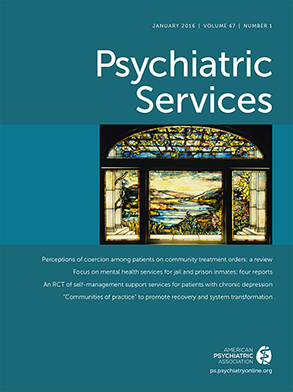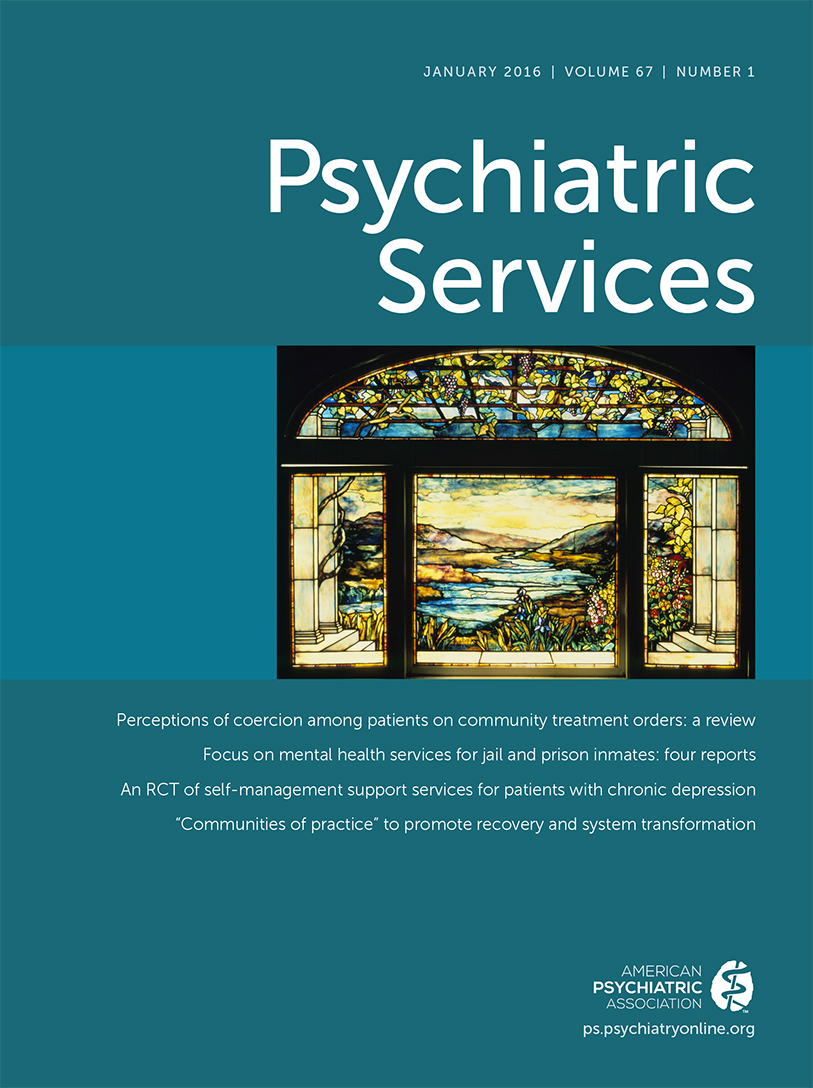Known by a variety of names—community treatment orders in the United Kingdom and other Commonwealth countries and involuntary outpatient commitment or assisted outpatient treatment here in the United States—court-mandated treatment has been examined closely in the pages of Psychiatric Services over the past three decades, and evidence of its effectiveness has been sifted and contested. Critics often rest their arguments on the coercive aspects of court mandates, arguing that the felt coercion of this experience jeopardizes engagement, undermines treatment, and promotes stigma. In this issue, Francombe Pridham and colleagues present a systematic literature review to address the question of whether patients who are exposed to court-ordered outpatient treatment find it coercive, and if so, what factors might mitigate their perceptions.
The authors identified 23 primary research articles, including quantitative and qualitative studies, published between 1993 and 2013 in English-language journals and based on 14 studies in seven countries. The evidence suggests that treatment mandates are often experienced as coercive but that the experience is context specific. It can vary as a function of perceived alternatives, greater or lesser insight into illness, the presence of additional forms of coercion or leverage in patients’ lives, and the ways in which court orders are initiated and enforced. The evidence base is not deep or robust enough to say whether and by how much planned interventions can minimize perceived coercion under court-ordered treatment while promoting recovery and patient-centered care. Part of the problem is that everyday psychiatric care for people with serious mental illness already relies so much on leverage—subtle and not so subtle forms of coercion—that reductions in one area might not be discernible in a person’s overall treatment experience.
Alternatives to outpatient commitment have been sought in both the United Kingdom and the United States to avoid further court involvement in treatment. One option is conditional release after an involuntary hospitalization. Under conditional release, treatment is divided into inpatient and outpatient phases. Courts authorize involuntary hospitalization on the front end but are not involved at the back end; clinicians decide when patients can be released to community treatment on an outpatient basis. This approach avoids the court mandate for outpatient treatment and is thus thought to be less coercive. Indeed, research from the United Kingdom and Australia indicates that conditional release is as effective as community treatment orders in reducing hospitalization and promoting community engagement with less legal compulsion.
Critics complain that conditional release is workable only for someone who is already hospitalized, not for an individual in the community whose psychiatric condition presents threats to personal or public safety but who refuses treatment. Many outpatient commitment statutes across the United States authorize preventive interventions even for individuals who would not meet criteria for involuntary hospitalization. In recent years, support for preventive outpatient commitment has intensified with the increase in gun violence and mass shootings. This development, however, is only the latest example of how the public can be swayed to believe that there are mental health solutions to complex social problems. Outpatient commitment is not failsafe; its adoption will not eliminate random acts of violence.
Expanded outpatient commitment is often conflated with efforts to reform the mental health system, as in the Murphy bill (H.R. 2646, “Helping Families in Mental Health Crisis Act of 2015”) now winding its way toward passage in the U.S. House of Representatives. However, legislating outpatient commitment without concurrently reinvesting in the restoration and growth of intensive and high-quality community services is nothing more than a cruel hoax. It has been 35 years since the federal government stopped funding community mental health centers, and for the past decade or more, states have been balancing their budgetary shortfalls by sharp reductions in funding for community mental health and substance abuse services. As a result, the behavioral health safety net is in tatters, workforce shortages—especially for prescribers—are reaching all-time highs, and the quality of everyday treatment for people with serious and disabling mental illnesses is only a shadow of what evidence guidelines call for. In this environment, court mandates alone are unlikely to be embraced and acted upon by resource-strapped mental health providers. Meaningful changes in community mental health outcomes will require attention to the intensity and quality of care as well as to its patient centeredness and recovery orientation.

